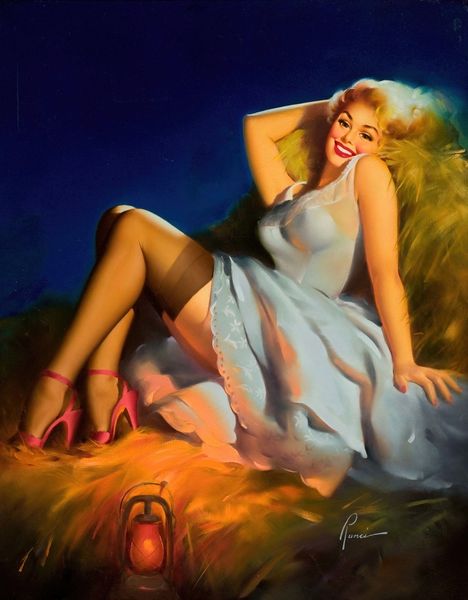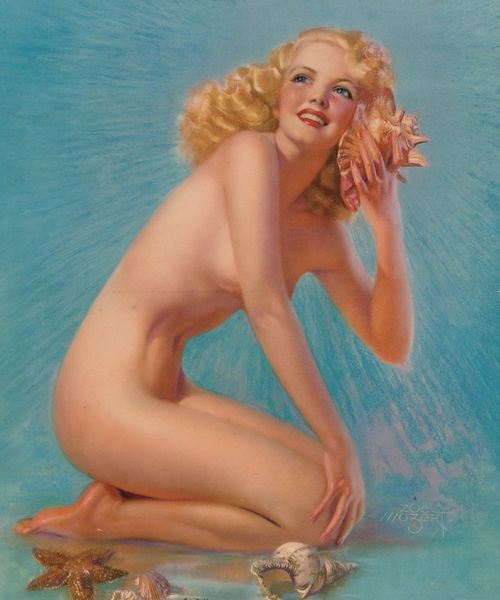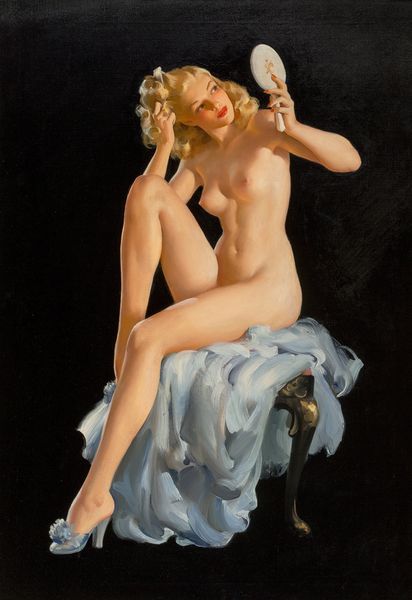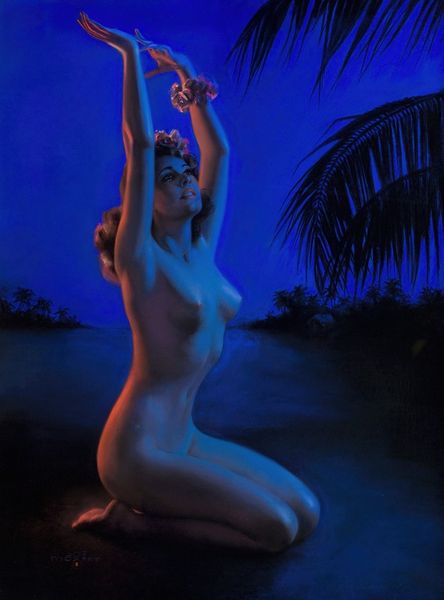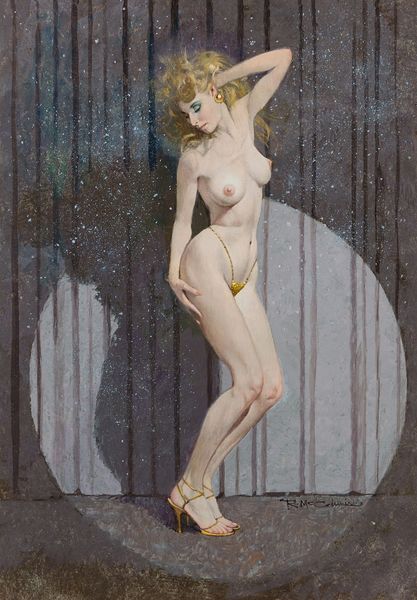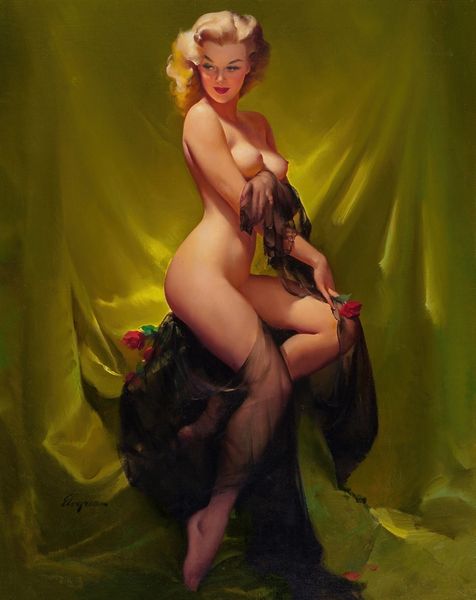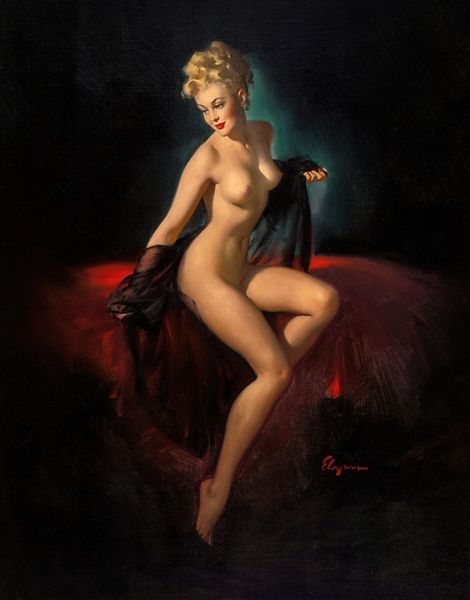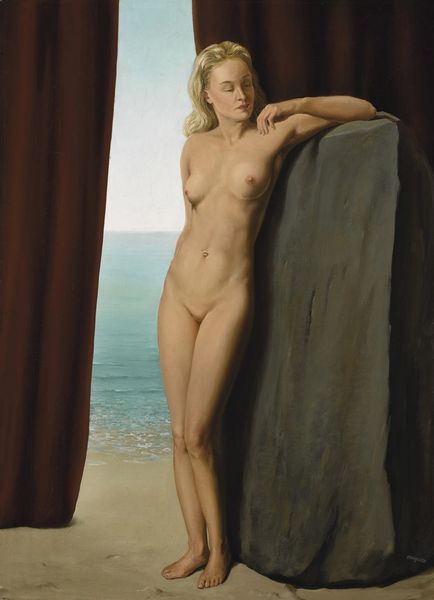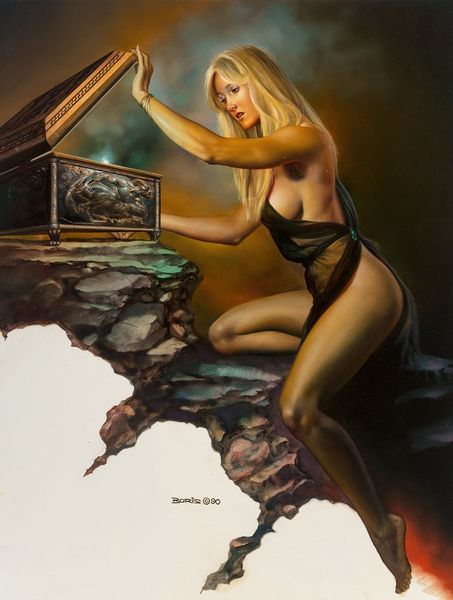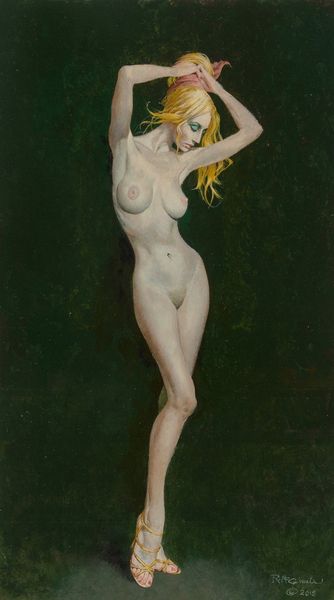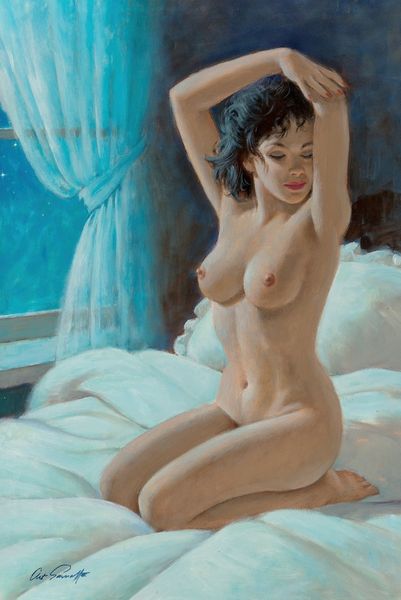
oil-paint
#
portrait
#
fantasy art
#
fantasy illustration
#
oil-paint
#
fantasy-art
#
academic-art
#
nude
Copyright: Modern Artists: Artvee
Curator: We're looking at Gil Elvgren’s 1947 oil painting "Gay Nymph." What are your initial thoughts? Editor: Ethereal. There's a real contrast happening— the dreamy scene against the almost industrial slickness of the rendered figure. Is she even touching the ground, or is this about display, a pin-up fantasy realized through paint? Curator: I see your point. The representation of women's bodies, especially during this period, was so tied to notions of mass production, even commodification. This feels connected to that. Think about post-war America, the male gaze intensified, shaping feminine ideals. What does that ideal mean for the woman herself? Editor: And how is the production mimicking reality? Consider the layered process to arrive at the high-gloss sheen: stretched canvas, primed surface, oil-paint built up in thin layers to achieve depth, a signature gloss on the figure itself. It speaks volumes. Curator: Exactly! The layers mirror the layers of constructed femininity at the time. Consider the pose: she's displaying herself, yes, but there's also a kind of liberation in that confident smile and stance. Can she claim agency in this objectification? Or is she merely reflecting society’s desires? Editor: Materially speaking, there's so much intent in the application. Compare how the figure and foreground flowers take on that intense varnish sheen, contrasted to the hazy backdrop. How deliberate to control our sight like this. Curator: It highlights a duality—the fantasy versus the natural world, maybe even innocence versus the artifice. Elvgren plays with those contrasts expertly, tapping into those tensions of post-war society where identities were constantly shifting. Editor: I can't help thinking about the production. All those layers. The painting has an unnerving smoothness – an ideal born in a factory as much as in nature. This gives me a window into how art gets used, how an image can reinforce and reshape beliefs through these clever manipulations of materiality. Curator: Agreed. It forces us to engage critically not only with art, but how the world represented affects the society who sees that world. It isn't passive, the engagement changes those beliefs and values over time. Editor: Seeing the craft allows us to pick at how its intentions take root within an image.
Comments
No comments
Be the first to comment and join the conversation on the ultimate creative platform.
